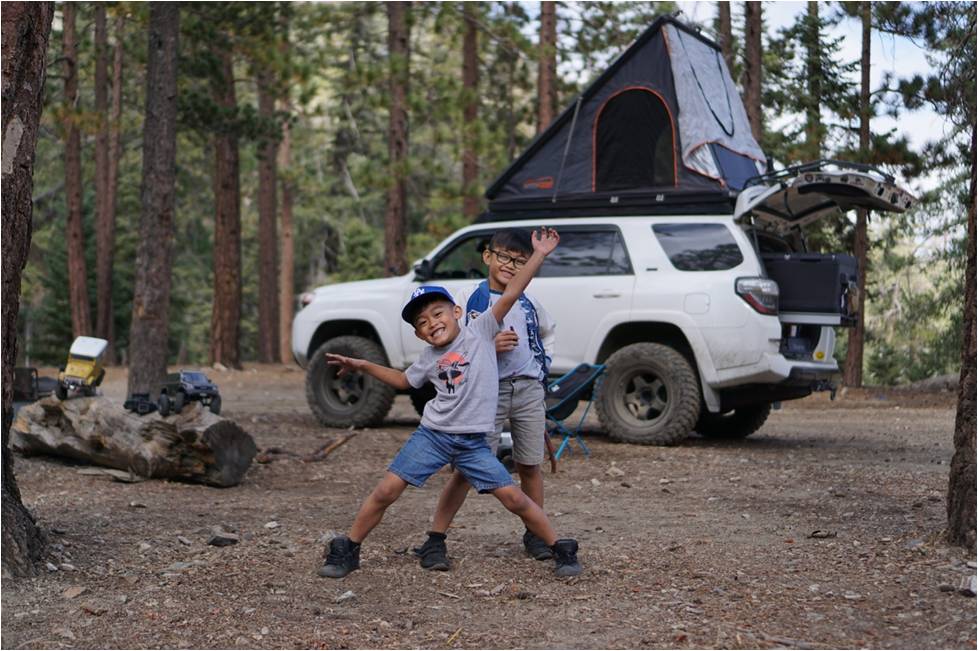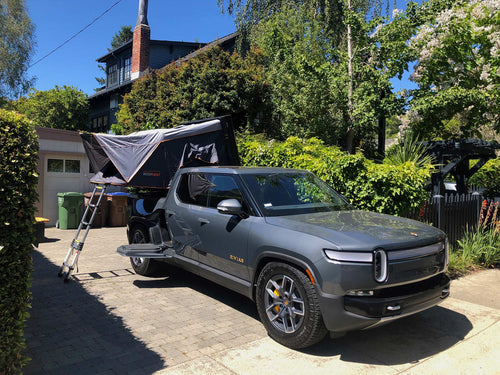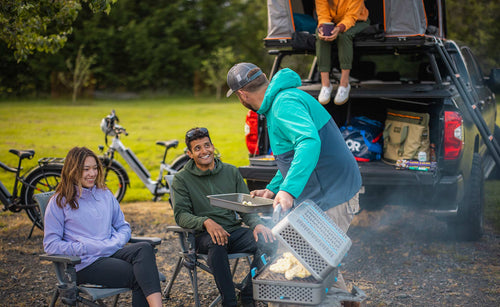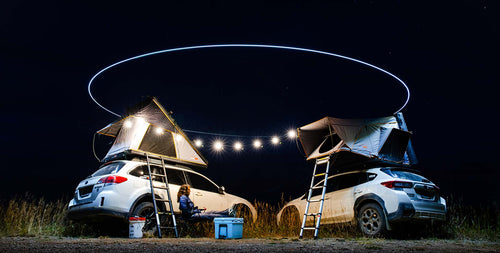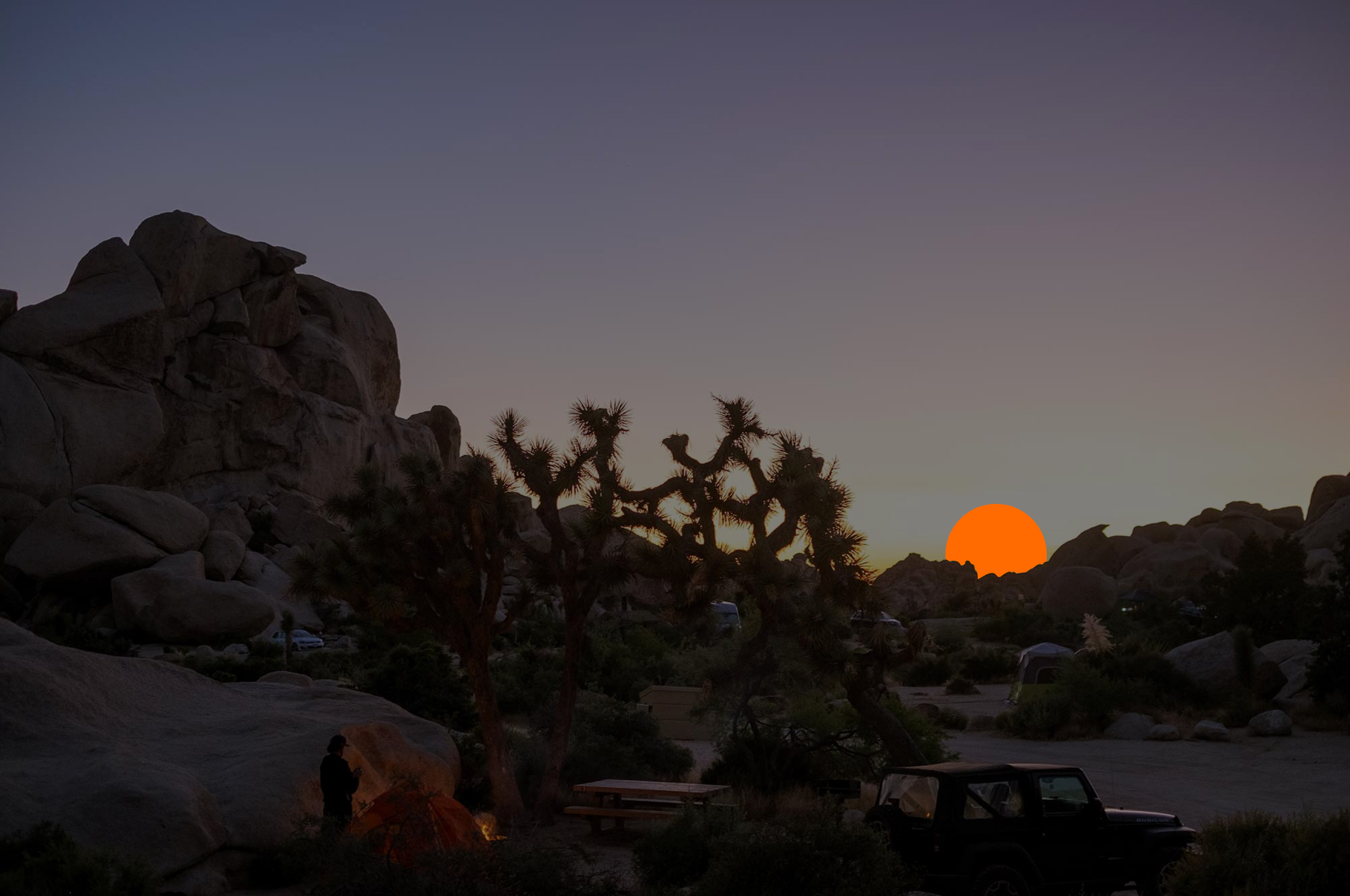One of the greatest parts of being a parent is watching your child discover all the magic the world has to offer every time you go outside. Their excitement can be contagious — especially when you’re exploring the joys of nature together.
This wonder is the same awe that you want all upcoming generations to experience, too. That’s why it’s so important to lead an environmentally friendly life.
There’s no better time than Earth Day to introduce your children to an eco-friendly lifestyle. Kick things off with these 3 fun Earth Day activities for kids, from age-appropriate educational books and crafts to ways to volunteer and make a difference today.
1. Pair an Educational Book with a Fun Outdoor Activity
As the foundation of Earth Day celebrations, you’ll first want to have a conversation with your kids about why we celebrate it.
Share with them that Earth Day was created as a reminder to everyone about the importance of saving our environment, so their kids and grandkids can enjoy all the same wonders of nature.
Go deeper into the lesson with
a good book and some Earth Day outdoor activities for kids of every age.
Preschoolers
For older toddlers and preschoolers, try the book
Don’t Throw That Away! Fun flaps, silly rhymes, Earth-loving superheroes — this book has it all!
In this book, you and your child will join an eco-friendly hero who teaches kids the joys of upcycling and recycling. This hero demonstrates how things like plastic bags and glass jars can be reused or made into something entirely new.
Afterward, try out your favorite up-cycling craft featured in the book — like a glass jar vase!
You can’t go wrong when the fun of crafting meets the satisfaction of saving planet earth.
4-6 Year Olds
Your 4-6-year-old will love the book
I Can Save the Earth! by Alison Inches.
Here, you’ll witness the enlightening journey of a little green monster who learns the importance of environmental conservation.
The little green monster is addicting to electronics, so much so that he causes a power outage! But In a happy turn of events, leaving the electronics behind encourages him to go outside and see all the wonderful sights, sounds, and smells he’d been missing out on.
As the monster is learning to appreciate the earth, he begins to care for it. At one point, he decides to make food for the plants.
This is a great opportunity to teach your children how to compost. Once you finish the book, put on your mess-friendly clothes, head outside, and get ready to
make plant food.
- Before you get started, drill 30 holes into all sides of a 3x3 plastic bin.
- With your child, add a few inches of soil to the bottom to attract worm friends.
- Next, go on a compost scavenger hunt. Find compostable items around the house and yard like banana peels, old leaves, and potato skins to add to the mixture.
- Finally, add enough water to dampen the heap.
- Stir it once a week. Once it’s decomposed and the individual items our mixed in are basically unrecognizable, it’s ready to mix into your garden soil. Do so whether your garden has started or not, and repeat once every 2 years.
Elementary Schoolers
Elementary schoolers might be ready for some more in-depth lessons on conservation. For older kids, grab a copy of
Heroes of the Environment, a collection of exciting real-life stories about kids just like them who made a difference for the earth.
Once you’re finished, try out a craft inspired by their favorite young hero.
For example, in honor of the character Calidra — who invents a special water filter for her city — you can make a water filter of your own:
- Cut a 2-liter soda bottle in half for your child.
- Put the top half of the bottle inside the bottom half so the top half forms a funnel going into the bottom half (mouth opening face down).
- Have your child place a coffee filter at the bottom so it covers the small opening at the bottom of the funnel.
- Encourage them to add things like clean pebbles, sand, and other elements that might help funnel water.
- Test the filter by pouring a cup of dirty water through it, whether it’s water from a river or a small cup of something you dirty up yourselves.
- See how much you can filter by trying out different combinations.
2. Spend the Day Volunteering
Volunteering with your kids is a great way to teach them the importance of taking care of the planet right where they live.
There are many international and local programs that run environmental events — like trash pickups, tree planting, and more — for you to enjoy with your kids.
You can spend a day with them at the
ASPCA (American Society for the Prevention of Cruelty to Animals) feeding and taking care of shelter animals. Or you can plant a tree with your local chapter of
The National Forest Foundation.
Volunteering is also a great opportunity for your kid to get creative and plan something new. They might be inspired to raise funds with a bake sale, give recycling tutorials to their neighbors, or contact their school district to learn more about how their school is taking action to protect the environment.
No matter what causes you and your family are passionate about, there are plenty of ways to get involved.
This handy tool helps you find volunteering opportunities near you based on your family’s interests.
3. Take Your Kids Camping

Camping is a go-to way to celebrate Earth Day for many families, and for good reason. It’s the perfect way to step out of your normal settings and get a taste of adventure.
What better excuse could you have to pack up the Roofnest and hit the road than celebrating Earth Day?
That’s right,
Roofnests are safe for the kids, too! Just follow your normal safety precautions — like ensuring the ladder and windows are secure, having plenty of portable lights around for potty breaks, and storing your trash away from your car and tent.
Each moment of camping can be a learning moment for the whole family. Be mindful of the beautiful sights and species around you, and talk about how they work together to
create an ecosystem.
Go over proper ways to get rid of trash so you
leave no trace. This helps keep the animals and plants safe from contamination.
And have plenty of good old-fashioned fun, too! There are so many activities you can incorporate into your camping trip that are both fun and educational, like stargazing through a telescope or learning the chemistry of a campfire.
Learn more ways to make camping educational for your kids >
 Camping is a go-to way to celebrate Earth Day for many families, and for good reason. It’s the perfect way to step out of your normal settings and get a taste of adventure.
What better excuse could you have to pack up the Roofnest and hit the road than celebrating Earth Day?
That’s right, Roofnests are safe for the kids, too! Just follow your normal safety precautions — like ensuring the ladder and windows are secure, having plenty of portable lights around for potty breaks, and storing your trash away from your car and tent.
Each moment of camping can be a learning moment for the whole family. Be mindful of the beautiful sights and species around you, and talk about how they work together to create an ecosystem.
Go over proper ways to get rid of trash so you leave no trace. This helps keep the animals and plants safe from contamination.
And have plenty of good old-fashioned fun, too! There are so many activities you can incorporate into your camping trip that are both fun and educational, like stargazing through a telescope or learning the chemistry of a campfire.
Learn more ways to make camping educational for your kids >
Camping is a go-to way to celebrate Earth Day for many families, and for good reason. It’s the perfect way to step out of your normal settings and get a taste of adventure.
What better excuse could you have to pack up the Roofnest and hit the road than celebrating Earth Day?
That’s right, Roofnests are safe for the kids, too! Just follow your normal safety precautions — like ensuring the ladder and windows are secure, having plenty of portable lights around for potty breaks, and storing your trash away from your car and tent.
Each moment of camping can be a learning moment for the whole family. Be mindful of the beautiful sights and species around you, and talk about how they work together to create an ecosystem.
Go over proper ways to get rid of trash so you leave no trace. This helps keep the animals and plants safe from contamination.
And have plenty of good old-fashioned fun, too! There are so many activities you can incorporate into your camping trip that are both fun and educational, like stargazing through a telescope or learning the chemistry of a campfire.
Learn more ways to make camping educational for your kids >
